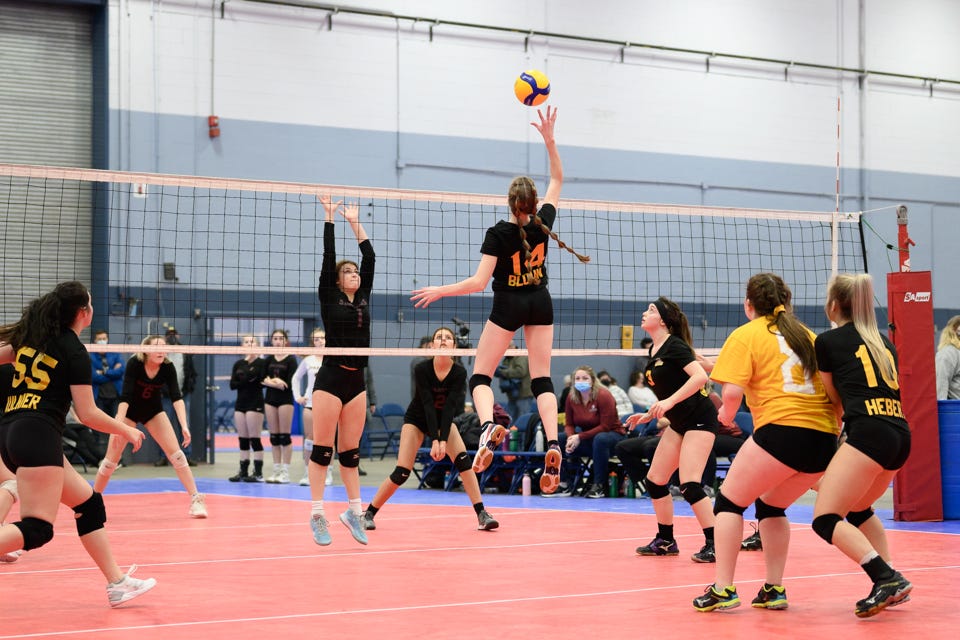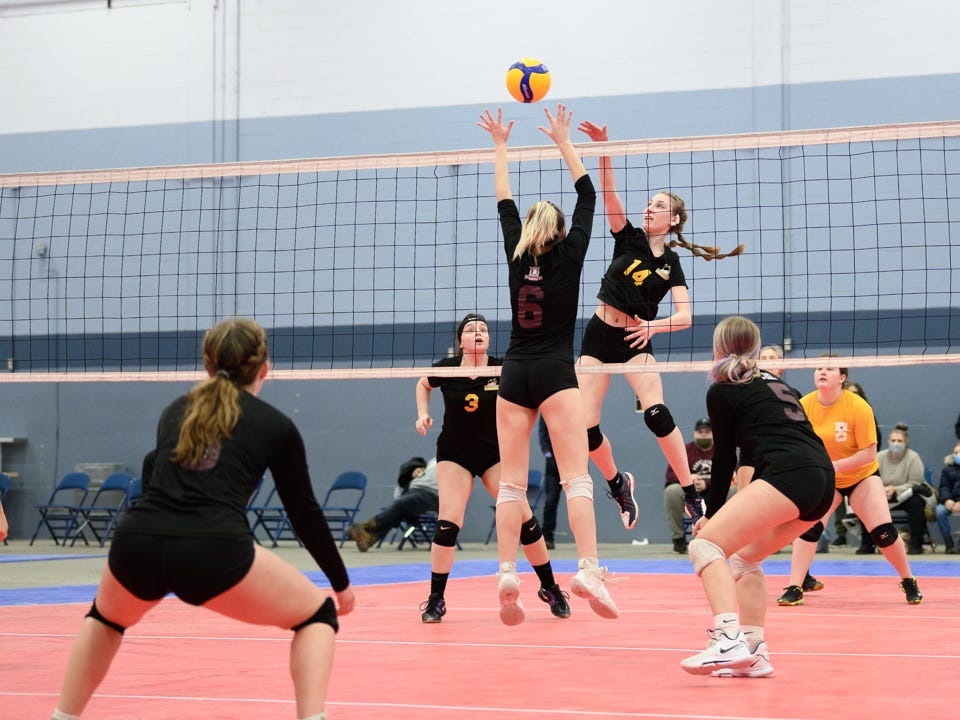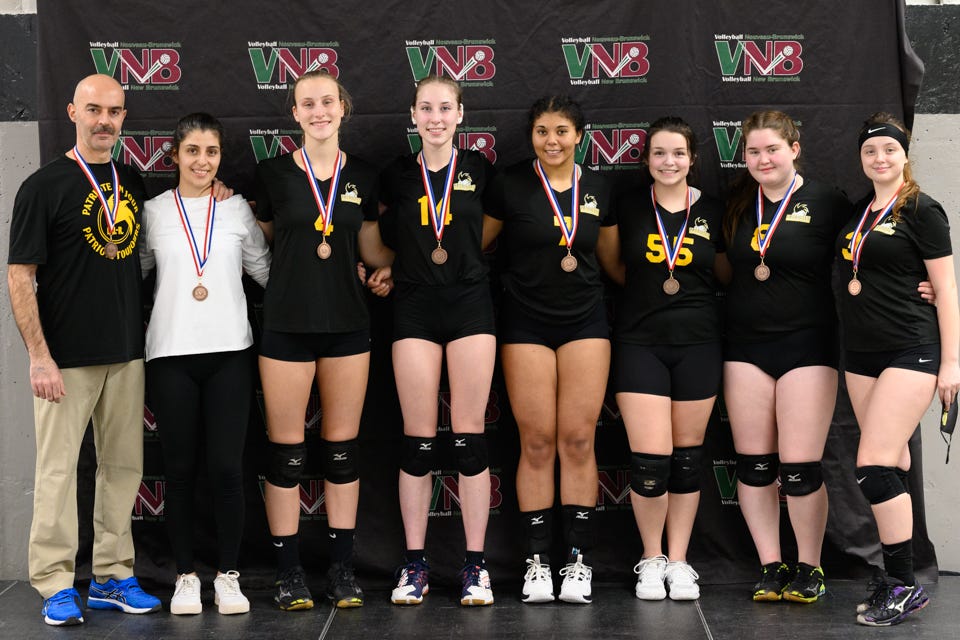Under-18 Club Volleyball Provincials
During the summer of 2020, I sold my digital single-lens reflex (DSLR) cameras and lenses and made the jump to a mirrorless system; the main reason being I wanted gear that was more compact, and lighter, that I could more easily bring along on hiking and cycling adventures.
In terms of convenience and image quality, I couldn’t be happier. But there are some rare occasions when I wish I still had my old gear, such as, during my daughter’s Volleyball New Brunswick provincials in mid-December.
Without getting into specifics, photographing indoor sports requires fast lenses. Although the lighting inside a gymnasium or the typical hockey rink might seem plentiful to your eyes, it’s usually not enough for standard photography equipment to freeze the action while also producing quality images with limited grain. Faster lenses, which provide wider apertures (and are more expensive) make up for this shortfall by allowing more light into the camera.
Prior to selling my gear, my lens of choice for sports photography was a 70-200 millimetre zoom with an f/2.8 maximum aperture. But now, the only adequately fast lens I have to shoot indoor sports is a 50 millimetre prime lens. Prime lenses are great in that they provide a wider aperture (and on a budget), but there’s a drawback: they don’t allow you to zoom in or out. Their focal length is fixed. This means that if you want to get closer to the action, you need to physically move in. Conversely, if you want to include more of the action within the frame, you need to step back. Of course, there are limits to how much one can move without interfering with a volleyball match and its surroundings.
In addition to fast lenses, a camera with an auto focus system that is both fast and accurate is definitely an asset when photographing sports. I’ve noticed that my new camera isn’t quite as performant in that regard in comparison to my old one. This means that many of the pictures I took had to be discarded on account of being out of focus.
The provincials were held at the Moncton Coliseum Complex’s exhibition space (also known as the agrena). To accommodate volleyball, interlocking plastic tiles are installed on the concrete floor to create multiple courts. It makes for a decent venue, albeit quite noisy with up to a dozen or so matches happening at any given time.
The red, white and blue courts look really nice too, but are a bit of a pain to photograph. The ceiling lights bounce off the courts and add a red tint to the images which is particularly noticeable on the players’ lower limbs. In the past, I would have obsessed over this by doing everything in my power to fix it in post-production. But here, I simply decreased the red saturation evenly across all images. Like I’ve said before, I’ve been making a conscious choice to spend less time in front of the computer.
During the tournament, a university head coach approached my daughter with the possibility of playing for their club next year. Discussions are still in the early stages, which is why I’ll refrain from naming the university, but over the next few months, my daughter will have some important decisions to make regarding her future. Again, I’m reminded that children grow up so fast!
The club entered the tournament with eight girls (that’s four less than a typical volleyball roster), and played the tier 2 elimination round with only six players. They won the bronze medal.
Let me conclude this post by thanking those of you who have reached out directly to share your thoughts on the newsletter. I always enjoy the feedback, so if you have any ideas about things you would like to see covered in future editions, please don’t hesitate to let me know.
Have a happy and healthy new year!









